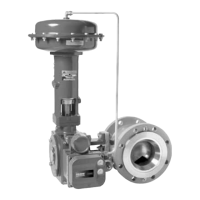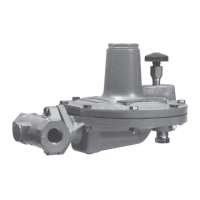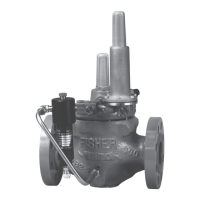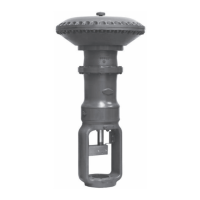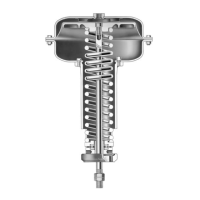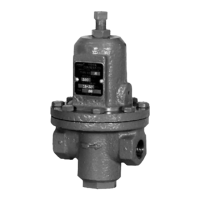Instruction Manual
D101322X012
1051 and 1052 Size 33 Actuators
June 2017
18
11. Relieve all spring loading on the diaphragm rod (key 10) to lever (key 27) connection by backing out (turning
counter‐clockwise) the up position travel stop (see figure 3). When the travel stop is no longer in direct contact with
the lever (key 27), it can be determined that all spring compression is being contained by the stop in the upper
diaphragm case (key 1).
12. Remove the cap screw (key 18) which secures the diaphragm rod (key 10) to the lever (key 27). Disconnect the
lever from the diaphragm rod by rotating the lever away from the diaphragm rod.
13. Remove and inspect the lever. If the lever is worn or damaged, or if the actuator will be mounted to a valve body
requiring a different size lever, replace the lever.
14. Inspect the bushings (key 31). If bushings are excessively worn or damaged, remove them with a press. Press in
new bushings so that they are flush with the interior surfaces of the actuator housing boss and housing cover
assembly.
Assembly
1. Refer to figure 7 for the correct orientation of the inner switch cam (if used); be sure that it is attached to the lever
in the proper orientation.
2. Refer to figure 7 for the correct orientation of the lever during assembly. Insert the lever into the bushing in the
actuator housing boss.
3. If the diaphragm rod has been removed, perform all operations through step 3 of the Assembly portion of the
Diaphragm Plate, Diaphragm Rod, Spring and Spring Seat procedure.
4. Rotate the lever so that it straddles the spherical bearing in the diaphragm rod. It may be necessary to exert lateral
pressure on the diaphragm rod to achieve alignment of the rod with the lever. Install the cap screw (key 18) and
tighten to the torque value in table 2.
5. If an outer switch cam is used, install the cam using the two machine screws, spacers, and retaining washers. Note
that the retaining washers help to keep all parts together as an assembly. Observe the orientation shown in figure 7.
6. If a positioner is used, install the positioner cam with machine screws. Be sure to observe the orientation shown in
figure 7 and follow all procedures given in the positioner instruction manual.
7. Install the housing cover assembly (key 33).
8. If the diaphragm plate has been removed, tighten the socket head cap screw (key 9) with a 5/16 hex wrench until
the diaphragm plate is fully seated against the diaphragm rod. Tighten the cap screw to the torque value in table 2.
9. If the upper diaphragm case has been removed, perform all applicable steps in the Assembly portion of the
Replacing Diaphragm procedure.
10. Refer to the Actuator Mounting and Changing Actuator Mounting procedure and proceed as follows:
For F and G mounting adaptations, start with step 3.
For H and J mounting adaptations, start with step 4.
11. For 1052 actuators only, refer to the 1052 Spring Compression Adjustment procedure and adjust the spring for
the desired initial set.
Proximity Switches, Lever Operated Switches, and Positioner
The proximity switches (see figure 15), lever operated switches (see figure 16), and positioner used with 1051 and
1052 size 33 actuator use cams (see figure 7) mounted on the lever to transmit valve ball or disc position feedback to
the accessories. These cams must be attached to the lever before accessories can be installed.
Installing the Cam
Key numbers referred to in the following procedures are shown in figure 15 for proximity switch installation and in
figure 16 for lever operated switch installation unless otherwise specified. Proceed as appropriate:
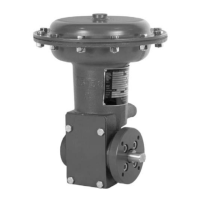
